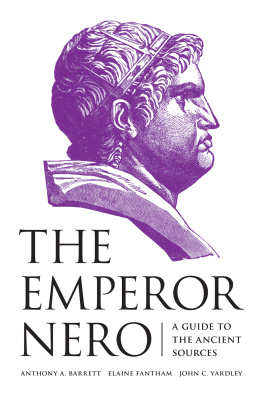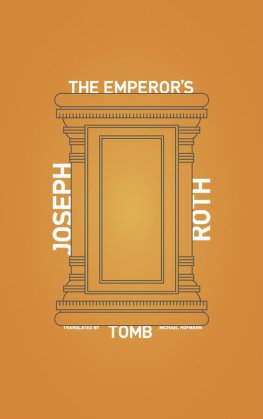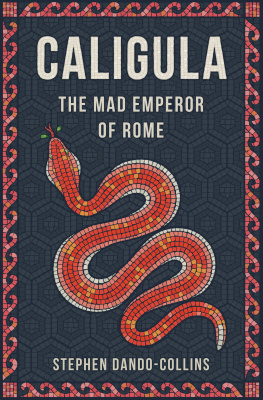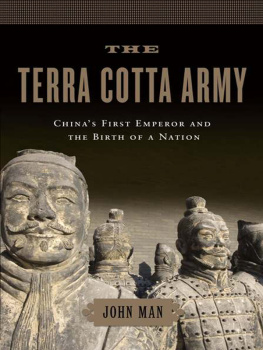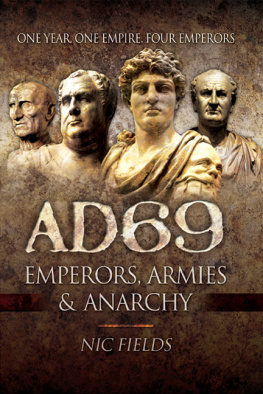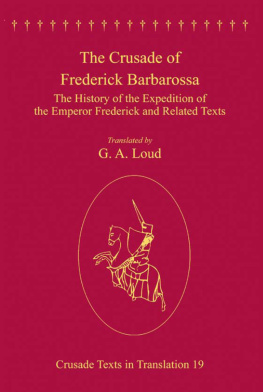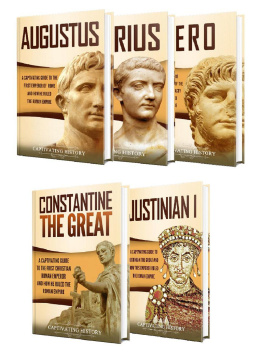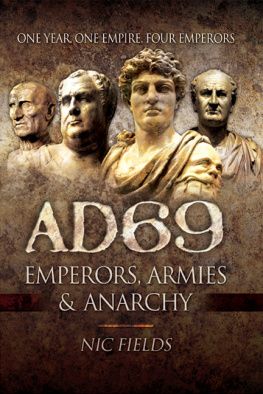
THE EMPEROR NERO
THE EMPEROR NERO
A GUIDE TO THE ANCIENT SOURCES
ANTHONY A. BARRETT, ELAINE FANTHAM, AND JOHN C. YARDLEY, EDITORS
PRINCETON UNIVERSITY PRESS
Princeton and Oxford
COPYRIGHT 2016 BY PRINCETON UNIVERSITY PRESS
PUBLISHED BY PRINCETON UNIVERSITY PRESS
41 William Street, Princeton, New Jersey 08540
IN THE UNITED KINGDOM: PRINCETON UNIVERSITY PRESS
6 Oxford Street, Woodstock, Oxfordshire OX20 1TW
PRESS.PRINCETON.EDU
Jacket art: Emperor Nero (3768 AD) Portrait, Engraving, 1882, Private Collection, J.T. Vintage / Bridgeman Images
ALL RIGHTS RESERVED
ISBN (PBK.) 978-0-691-15651-4
Library of Congress Cataloging-in-Publication Data
Names: Barrett, Anthony, 1941 editor. | Fantham, Elaine, editor. | Yardley, John, 1942 editor.
Title: The Emperor Nero : a guide to the ancient sources / Anthony A. Barrett, Elaine Fantham, and John C. Yardley, editors.
Description: Princeton : Princeton University Press, 2016. | Includes bibliographical references and index.
Identifiers: LCCN 2015048217 | ISBN 9780691156514 (pbk.)
Subjects: LCSH: Nero, Emperor of Rome, 37-68. | RomeHistoryNero, 54-68Sources.
Classification: LCC DG285 .E47 2016 | DDC 937/.07092dc23
LC record available at http://lccn.loc.gov/2015048217
BRITISH LIBRARY CATALOGING-IN-PUBLICATION DATA IS AVAILABLE
This book has been composed in Adobe Jenson Pro and Trajan Pro
Printed on acid-free paper.
PRINTED IN THE UNITED STATES OF AMERICA
1 3 5 7 9 10 8 6 4 2
CONTENTS
PREFACE
Nero is an inherently fascinating individual, and his reign was witness to a number of highly significant events. The case for a sourcebook therefore seems to be self-evident. In selecting the material to be included in this particular one, we have tried to illuminate those incidents of Neros life and rule that are either historically significant or just inherently interesting. While few would dispute that these are valid criteria, few also are likely to be in total agreement about which incidents actually meet them. In reality, when selecting episodes that best exemplify the life and career of any historical figure, one cannot help being guided by what are, in the final analysis, essentially subjective principles. This shortcoming we cheerfully concede.
In presenting the material, chosen in part on this subjective basis, we have not been rigidly consistent. For this, we do feel that an explanation, albeit brief, is appropriate. For some phases of Neros reign, we offer a selection of chapters that seem to illustrate events most effectively. But, for other phases, most notably the Parthian campaign and the Pisonian conspiracy, we have provided an almost complete sequence of passages. This has been deliberate. The military events on the Euphrates frontier are largely unintelligible when seen piecemeal; it is only when they are viewed as a whole that anything approaching a coherent picture emerges. The Pisonian conspiracy stands alone in the extant Annals, as Tacituss most detailed lengthy episode, composed as a discrete and almost self-contained extended literary narrative. It also needs to be seen as a whole, not in parts.
The bulk of the material presented here consists of passages from literary sources. We have, however, also made use of primary sources. The reign of Nero does not abound in significant epigraphical or papyrological material, and we have provided only a very small selection. Neros coins, on the other hand, are richly varied and numismatically significant, and we have drawn quite heavily on them. They serve two purposes. On the one hand, they provide direct contemporary evidence of how the Neronian regime sought to present itself to the world. But they are also by far the best medium to illustrate the visual Nero. Ancient Roman sculpture survives in abundance, but very few examples survive that have their identifying inscriptions. Consequently, their identification is a highly contested scholarly enterprise, fraught with difficulties, often involving little more than inspired guesswork. And even when a piece of sculpture is confidently identified, one cannot be certain to what extent that portrait has been idealized. By contrast, the images of emperors on official Roman coins present no problems of identification, coming as they do with names and titles. But also it is generally agreed that in this period they are strikingly realistic, warts and all. The numismatic images of Nero depicted in this book offer a vivid, and remarkably honest, record of Neros transition, like Henry VIIIs, from gilded handsome youth to coarse and bloated libertine.
This is not a conventional sourcebook. We have been guided by the principle that much of the writing, especially the historical writing, of antiquity is a baffling mystery to the student and to the general reader (and often to the classical scholar!). We have accordingly provided extensive annotation, far more than is usual in a book of this nature, to explain those individuals, events, and institutions that are likely to be unfamiliar. Our hope is that the resultant text will serve the reader on a number of levels. The serious general reader, already familiar with the broad outlines of Neros reign, will, we hope, appreciate seeing the actual passages from which his story is derived, and will probably be satisfied to read only the introductions and the translations and generally ignore the commentary. Undergraduates seeking help for regular courses in Roman history will occasionally want to dip into the notes and benefit from the guidance that they provide. Advanced students in more specialized history courses will want to come to grips with some of the problems and issues that are raised in the more detailed sections of the commentary and to pursue the references to their original contexts.
This book reflects the interests and expertise of the collaborators. Anthony Barrett provided the introductory material and the commentary, as well as the numismatic and epigraphic entries, and John Yardley provided the translations of the literary texts. Elaine Fantham, however, undertook general responsibility for all nonnumismatic and non-epigraphic aspects of number of embarrassing errors. Any errors that have crept in since then are entirely our own responsibility. Laura Gagn of the University of Ottawa prepared the index for us. Quinn Fusting of Princeton University Press and her predecessor Hannah Paul have guided the manuscript toward publication with efficiency, patience, and quiet encouragement, and we are grateful to them.
A GUIDE TO USING THIS BOOK
The book begins with a general introduction to the reign of Nero. There follow twelve thematic chapters. Each chapter begins with a brief introduction to the general topic of the sources (in those chapters where there are subdivisions, the various sections are prefaced by their own short introductions).
The translated source material then follows, preceded by short summary captions in italics. In the Chapter on Parthia, where the sources follow a chronological sequence, linking texts summarize very briefly those sections in the sequence that have not been translated.
For the sake of clarity, the discussions of coins and inscriptions are enclosed in boxes.
INTRODUCTION
Nero Claudius Caesar Drusus Germanicus was the fifth Roman emperor and, upon his death in AD 68, the last representative of Romes first imperial dynasty, the Julio-Claudians. In the popular imagination, he is the quintessential vicious tyrant, with a prodigious appetite for villainy. But the fundamental forces that shaped his reign derived not so much from the vagaries of a willful autocrat as from historical developments a century or so earlier.
Next page
